Although it seems simple, it is not. It’s easy while stationary, but not in movement. And while the jackets don't look much different than they did years ago, they are. Good garments have almost completely solved these problems, which has brought an added benefit: less insulation is needed for the same performance, reducing weight and volume.
And there's always room for a new breakthrough. this year, The North Face launched its 50/50 down system. The design of the panels varies completely, in such a way that, when standing still, they totally warm us, but in movement and activity the system "opens up", and prevents us from overheating and excess sweating. Smart down.

The North Face 50/50. New down insulated clothing
Down-insulated Clothing
The great advantage of down is that is creates a 3D space.
By expanding so much, instead of creating a barrier, it creates a large space. In this space a lot of air is retained, which when heated is a true heat pump. There is much more hot air around us than a barrier material can hold, which fills much less space, and therefore stores much less heat.
1. Down vs. Feathers
Although similar, there is a difference:
- Down is it’s own thing. It’s not a young feather or small feather. It will never turn into a feather. Down comes from a goose’s abdomen and neck, protected by a layer of feathers. It has a tip, but not a central shaft, making it much more elastic than a feather.
- Feathers, with their central shaft, are easy to recognize.

Feathers or Down
2. Down Quality
The quality of down filling comes from the percentage of down vs. feathers it has.
The highest quality will indicate something like 90/10 or 95/5, meaning 90-95% down and 5-10% feathers. This indication is used less and less, and is being replaced by a Fill Power (FP) rating instead.
The more down it has, the greater the expansion and compression capacity, the greater the heat retention, and the less weight.
It’s hard to imagine just how much down can expand and how much heat it can retain at a minimal weight. Some years ago we held a contest together with the British brand British brand Rab, which we called How much does “warm” weigh?
It consisted of filling an election urn with down from Rab, which is extremely high quality. Those who guessed closed to the weight entered a raffle for a free top of the line Rab down jacket.
From out of more than one thousand participants, very few were able to get close to the actual weight. The vast majority more than doubled the weight, and answers ranging to up to 7-8 times the real weight were the most common. It was nearly impossible to imagine that the amount of down needed to fill a 40L box weighed only a few grams.
3. The Impressive Expansion Power of Down
We can explain it with numbers.
The capacity for expansion is measured in Fill Power (FP), and is measured in Cuin, acronym for “cubic inches.” FP is a measure of the relationship between the weight of down and the volume it occupies once expanded.
The mass reference that’s used is 1 ounce (1oz = 28.35g), and depending on the quality, one ounce can expand to up to between 600 and 900 Cuin, for use in the best technical outdoor clothing.

Different Fill Power of Down by Cuin Rating
What does all of this mean?
Converting this into the metric system, every 26g. of down between 600-900 Cuin can expand to take up 10L (for 600 Cuin) or 14.76L (for 900 Cuin). We can imagine then how with just a few grams of down we can surround ourselves with liters and liters of warm air.
In the case of our contest: with just 70 grams of down we were able to fill 40L container.
4. Advantages of Down
- Unbeatable heat to weight ratio
- Maximum capacity for expansion and compression. Facilitates transport
5. Disadvantages of Down
- It’s greatest advantage can be a problem depending on the situation. Voluminous and bulky, classic down puffies can be awkward to use during aerobic or strenuous activity and even lead to overheating.
- Down’s kryptonite is humidity. Wet down loses all its loft and is almost completely useless. Down treated with hydrophobic materials now exist to mitigate this issue, but it’s still problematic.
- Origin. If it is a regulated and ethical down with proper traceability like that of the big brands, it is not a problem; but there is a lot coming from Asia in other lower-priced products that can be extracted in disastrous situations for the animal.
6. Ethical Questions Concerning Down
Down has been a questionable form of insulation until some years ago, because of the way it was plucked from the birds and the conditions they were kept in; on one hand, the down was plucked from live animals, as it was considered to be better quality; and on the other, some of the down came from animals that were force-fed for Foie Gras Pâté.
The largest brands have now stepped in, forming the OIA Sustainability Working Group and the European Outdoor Group, among others, groups that have managed to guarantee the traceability of the down used by their members, in such a way that only down is used from animals that have died, never from live animals, and which have lived in humane conditions, free range, and without being force fed. These members receive the RDS, Responsible Down Standard, or the Global Traceable Down Standard (Global TDS).
These certificates, monitored from start to finish by independent bodies, exhaustively monitor the entire supply chain, both of the animal conditions and of the workers involved.
Asian down, which is difficult to trace and which does not guarantee that certain procedures are followed, is no longer used, and according to the international agreements of these groups, down from central Europe is used, coming from small and medium-sized traditional certified farms and in constant external supervision, in which the animals live in freedom and without bait, which guarantee that the material meets the required ethical standards, and feathers are never extracted from live animals.
There are brands such as Rab that, in addition to using ethical down, are also using a large percentage of recycled down, by reusing down from preexisting garments. This is the GRS-certified P.U.R.E system, and we can find it in their Microlight line. The entire process of tracking and recycling is done in Italy.
Synthetic Insulated Clothing
Synthetics, like any other product, receive constant innovations and advantages. Therefore, at this time it is difficult to treat them in a general way.
Synthetic fibers, in general, are less ductile and soft, forming a flat barrier rather than a 3D environment. Their capacity for compression and expansion is much lower. That is why they were used in the cheapest material; On the one hand, to achieve the same heat, they weighed considerably more and couldn’t be compressed as much as down.
Later fibers began to be created that, despite continuing to be barriers, were much more ductile, with a high heat-to-weight ratio. Primaloft, which does not stop evolving, is still one of the best, with a very proven effectiveness, very far from the old felts and the like. It is very advanced technology.

Patagonia Nano Puff: primaloft ultralight, highly compressible, made from 100% recycled materials
Possibly the most advanced synthetic fiber on the market is that made by Arc'teryx. Developed by their in-house R&D department, we can find some of the best synthetic-insulated jackets for aerobic activity available, such as the Atom LT Jacket.

Atom LT Jacket, super thin for freedom of movement
1. Synthetic “Down”: The North Face Thermoball, Rab Cirrus
Then some years ago, synthetic fibers that imitated the properties of down began to appear in the market. This so-called “synthetic down” creates a 3D environment, similar to 650-700 cuin down.
The Thermoball by The North Face and the Rab Cirrus are two of the most advanced. Both are made from recycled plastic (every Cirrus jacket contains ten PET bottles).

The North Face Thermoball Pro Hoodie, women’s jacket
They weigh more than than actual down. However, by imitating down’s 3D effect, they obtain a similar heat capacity of 650-700 cuin down, but without the performance loss if wet.
2. Advantages of Synthetic Insulation
- Less expanded volume for improved freedom of movement
- Main advantage – excellent performance in wet conditions
- Excellent value for money
3. Disadvantages of Synthetic Insulation
- Less heat retention than down
- Lower warmth-to-weight ratio
- Less compressible (though modern synthetic fibers compress quite well)
Synthetic vs Down – How to Choose
- The “classic” puffy down jacket, due to its high heat capacity and its large expanded volume, is used both in situations of intense cold or expedition -nothing can replace this type of clothing-, as well as in situations when standing still in the mountain; at the end of the day in the store, etc. Also, in situations of such cold, humidity does not appear.
- However, this large volume means that traditional down garments restrict freedom of movement, and their use in technical activities suffers.
- With the appearance of modern ultralight mid layer, athletic garments, made of both down and synthetics, the volume problems of down decrease, but by having much less padding, the differences in compression and weight between down and synthetic are less apparent.
When to Choose Down:
- For extreme conditions such as high mountaineering, winter expeditions, etc. In this case, a classic down puffy.
- As a minimalist mid-layer in mostly dry conditions.< /li>
- If you are looking for a sleeping bag that gives you maximum warmth, but is also light and packable.
When to Choose Synthetic:
- In classic synthetic, if you don’t require the extreme protection that only classic down can provide.
- If you choose a modern, minimalist mid layer, but prefer the moisture protection of the synthetics. The increase in weight and the lower packability with respect to down is minimal. An all-rounder that never fails.
- If you choose so-called “artificial down” such as Thermoball; it's not a down replacement, but it has some of the best of both worlds.









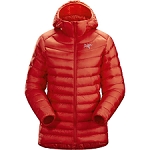
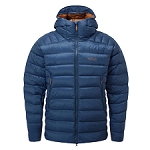



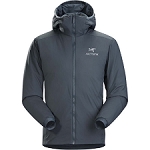
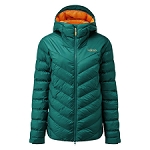

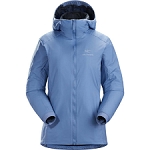




Leave a comment
Be the first to comment on this article.